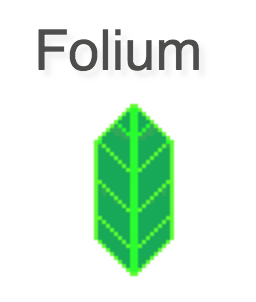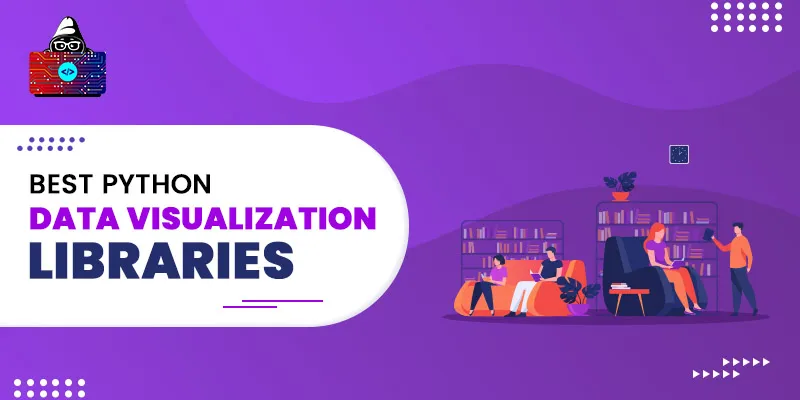Python is one of the most prominent programming languages in the field of data science. Also, data visualization is an integral part of data science. This article details the 7 best Python data visualization libraries to use in 2022.
In data visualization, we deal with the different techniques of displaying and representing data such that even a layman can conclude the result of the data analyzed. As Python is well known for its wide array of data science libraries, there is no scarcity of libraries for visualizing data. In fact, many Python data science libraries are built on data visualization libraries.
For a Python data scientist, it becomes very important to learn data visualization libraries along with the data science libraries.
Here in this article, we will detail the best and most widely-used Python data visualization libraries.
Best Python Data Visualization Libraries
With the help of Python data visualization libraries, we can plot different types of graphs to represent data so that everyone could understand the behavior of the data variables.
Here is a quick look into the 7 best Python data visualization libraries that we will cover in this article:
- Matplotlib
- Seaborn
- plotly
- Bokeh
- ggplot
- pygal
- folium
1. Matplotlib

Matplotlib is the most popular and widely-used python data visualization library and this would be your first data visualization library that you will be learning with working on data science with the Python programming language. Also, it is compatible with Python popular data science libraries, like numpy , sklearn, and pandas.
Interestingly, Matplotlib was the first Python data visualization library, and many other libraries are built on top of it. Moreover, libraries like Seaborn and pandas use some of their methods.
With matplotlib, we can create interactive 2D graphs, including line graphs, scatter graphs, bar graphs, and hist graphs. Although matplotlib does not give inbuilt support for 3D graphs, it provides an additional toolkit - mplot3d - to plot 3D graphs.
Starting with matplotlib
Matplotlib is an open-source third-party Python library, so we first need to install it before using it.
pip install matplotlib
Example
>>> import matplotlib.pyplot as plt >>> x = [1,2,3,4,5] >>> y = [1,4,9,16,25] >>> plt.plot(x,y) [<matplotlib.lines.Line2D object at 0x019F5D00>] >>> plt.xlabel = "X axis" >>> plt.ylabel = "Y axis" >>> plt.show()
2. Seaborn

These days, data scientists only use matplotlib for analysis and educational purposes, but in publications and real presentations, they use Seaborn. Now seaborn has become the professional Python data visualization library.
In reality, Seaborn is built on top of matplotlib and is widely used for representing statistical data using interactive graphs. Because of the same, it can do more things than matplotlib with less complexity and briefer syntax. It is very close to popular data science libraries, like pandas and numpy, and provide various methods for plotting graph using DataFrames and arrays.
Starting with seaborn
Seaborn is also an open-source python library, and using a simple pip install command can install it.
pip install seaborn
Example
>>> import matplotlib.pyplot as plt
>>> import seaborn as sns
>>> tips = sns.load_dataset("tips")
>>> sns.relplot(
... data=tips,
... x="total_bill", y="tip", col="time",
... hue="smoker", style="smoker", size="size",
... )
<seaborn.axisgrid.FacetGrid object at 0x113C2D30>
>>> plt.show()
3. Plotly

It is a powerful and robust python data visualization library capable of plotting simple and complex graphs. Using this library, we can plot around 40 different types of graphs, including 2D and 3D. Plotly is built on the top of the popular JavaScript library ploty.js, and it allows python developers to plot simple and interactive graphs on the web browser. We can use this library to display graphs on Jupyter Notebook and save those graphs as standalone HTML files.
Starting with Plotly
Plotly is an open-source python library. Use the pip install command to install it.
pip install plotly
Example
>>> import plotly.graph_objects as go >>> fig = go.Figure(data=go.Bar(y=[2, 3, 1])) >>> fig.show()
4. Bokeh

Bokeh is another powerful Python data visualization library for modern web browsers. It is native to the Python programming language, and that’s why many Python developers prefer using bokeh over Plotly.
Like Plotly, we can obtain Bokeh plotted graphs in HTML format. Bokeh is also very compatible with popular Python web frameworks, such as Django and Flask, and we can embed bokeh in Django and Flask web applications.
Starting with Bokeh
To use Bokeh, we first need to install it using the pip install command.
pip install bokeh
Example
>>> from bokeh.plotting import figure, show >>> plot = figure(plot_width = 500, plot_height = 500) >>> x = [10, 20, 30, 40] >>> y= [100, 400, 900, 600] >>> plot.circle(x,y) >>> show(plot)
5. Ggplot
Python ggplot is a plotting library that is based on the R programming ggplot2 library. In ggplot, gg stands for Grammar of Graphis, and designing graphs using ggplot is similar to writing sentences in English. It is also very compatible with the python pandas library and can plot graphs using DataFrames and Series.
Starting with ggplot
ggplot is an open-source library, so we can easily install it for our python environment using the pip install command.
pip install ggplot
Example
from ggplot import * ggplot(aes(x='year', y='price'), data=price) +\ geom_line() +\ stat_smooth(colour='red', span=0.2)
6. Pygal

The data visualization library is used to plot simple graphs on web applications. One can use this library with popular python web frameworks, like Flask and Django, and plot dynamic and interactive graphs on the web page.
Pygal is capable of plotting different charts, including line, bar, histogram, XY, pie, radar, box, and dot. Also, we can output its chart and graphs in different formats, including SVG, PNG, and Etree. The Python data visualization library is highly recommended for small web applications that require simple and fast graphs.
Starting with pygal
Install pygal library using the pip command.
pip install pygal
Example
>>> import pygal >>> line_chart = pygal.Line() >>> line_chart.x_labels = map(str, range(2008, 2020)) >>> line_chart.add(Price, [190, 200, 210, 215, 216, 220, 220, 221, 222, 230, 250]) <pygal.graph.line.Line object at 0x0035AF88> >>> line_chart.render()
7. Folium

The Folium library is built on top of the JavaScript leaflet.js library. Often in data science, we work on projects where we want to visualize data on a map. In such a scenario, we cannot rely on libraries like matplotlib or seaborn. Here, we use libraries like Folium.
The data visualization library is often used by data scientists during data cleaning of a map. With the help of Folium, we can manipulate map data and visualize it on the go. Folium comes with many built-in test sets for different maps, including OpenStreetMap, MapQuest open, Mapbox, and Stamen. Also, Folium supports data in JSON format and binds that data to provide visualization over a map.
Starting with folium
pip install folium
Use the above command to install the Folium library.
Example
>>> import folium >>> map_osm = folium.Map(location=[35.1336, -112.9330]) >>> map_osm.create_map(path='file.html')
Conclusion
With this, we conclude our article on the best Python data visualization libraries. Data visualization is a must-have skill for a Python data scientist. All the Python libraries that we have listed here are the most popular ones and are ranked according to their popularity and usage.
We suggest you go through at least 2 to 3 libraries and choose the best one for you. Libraries like Matplotlib and Seaborn are the most popular data visualization libraries for data science. Libraries like Plotly, bokeh, and pygal are used with web applications to visualize data or plot graphs and charts on websites.
People are also reading:





Leave a Comment on this Post